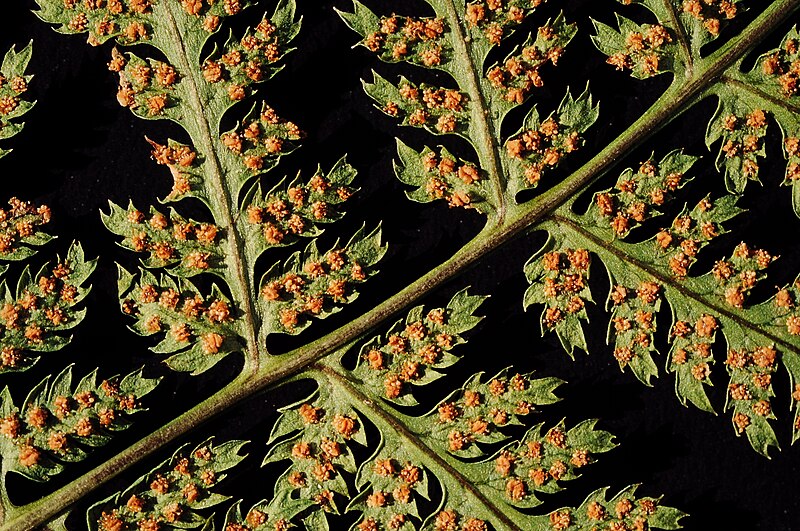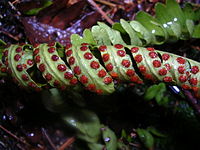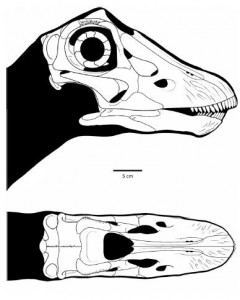One of the more vexing questions in dinosaur paleontology in my view is the question of herbivorous dinosaur growth rates. Lacking the jump start mammals get from milk and seemingly left to fend for themselves from the get go in the case of the large sauropods- how did baby dinos scarf down enough nutritious food in ecosystems dominated by gymnosperms and pteridophytes to account for the relatively fast growth rates that bone histology studies suggest? Although recent experimental work on the digestibility of ferns, horsetails and conifers shows that, with long retention time, certain common Mesozoic plants were comparable in nutrition to extant forage- this digestive strategy was probably not an option for the smaller immature animals (and I am not 100% sold on excessively long retention times in the adults as well- but more on that later). Many have suggested that opportunistic foraging for inverts and other small critters would have helped optimize nutrient levels in baby dinos and I am not opposed to this notion. Unfortunately, much in the way our view of dinosaur biology/ecology is skewed through the looking glass of 65 million years of mammal evolution- our interpretation of how dinosaur forage was utilized is marred by looking through the prism of an angiosperm dominated world. But if we look closer at certain plants dinos may have exploited it can be observed that they offer unexpected surprises.
Upon looking at the panoply of angiosperm dietary choices exploited by herbivores it is readily observed that the fruit, seeds, nuts and reproductive propagules are highly sought after food items. Among small herbivorous mammals such as rodents or primates these parts of the plant form a predominant part of the plant. But when we look at the choices in the Mesozoic, especially when angiosperms were rare or non-existent, you don't see a whole lot of options of comparable value in terms of calories, proteins, fats etc etc. Sure you got your podocarp fruits and maybe pine nuts of various conifers were exploited. Strange cycad fruits were maybe an option, but maybe not if they were too astringent or poisonous as many are now. But ferns- the plants seemingly most in reach for baby dinos and ubiquitous through many Mesozoic ecosystems seem bereft of any possible nutritive benefits for a fast growing baby dino, save the delicate fiddleheads- producing no seeds, cones, fruits or other obvious tasty bits. Were ferns simply ignored?
 |
| Sori. Dryopteris. wiki |
A closer look at ferns shows they offer some tasty and nutritious benefits. If you look at the underside of fern fronds (abaxial) you may spot clusters of sporangia also known in ferns as sori. These are the
 |
| Sori on fern. wikipedia |
reproductive organelles of ferns. They shed onto the ground or into the air column, hopefully growing into a gametophyte and completing the weird alternation of generation life cycle characteristic of these plants culminating in spore producing sporophyte. But what is of interest to me, and what was of interest to those hungry growing baby dinos I suggest, is that the sporangia or sori is loaded with lipids, proteins and calories. Great dino baby food in other words. Indeed wikipedia lists several animals that routinely exploit this food source including the European woodmouse (Apodemus sylvaticus), bullfinch (Pyrrhula marina), and the New Zealand lesser short tailed bat (Mystacina tuberculata). What all these critters have in common is that they are small, they are warm, and they represent animals that generally go after high quality food stuffs. If sori are good enough food for these critters to live on, I would venture to say that fern spore is rich enough for baby dinos to eat and even grow on. The trick is how to, shall we say, separate the wheat from the chaff.
If we look at sauropod tooth structure, especially the diplodocines, the teeth form a loose rake at the front of the jaw. Much as branch stripping has been posited as a feeding method in these dinosaurs, immatures need simply take the fern frond in their mouth, pull back, and rake in the easily shed sori. If you are a growing sauropod find yourself a nice field of tree ferns bursting with spores, hunker down and feed on this rich food source all day.
 |
| Diploducus skull. wiki |
And for the beaked ornithischian dinos the method is much the same. Put frond in mouth, pull back gently allowing the nutritious sori to separate from the fern against your beak, swallow and repeat.
Of course sporangia were not the only food growing baby dinos exploited- but I believe they would have at least seasonally been a reliable protein, calorie, and lipid rich resource in what at first glance appears an impoverished flora. I would even go so far as to say that fern spore may have regularly been exploited by various adult dinosaurs. Look at the strange skull of stegosaurus. Ii is a bit of an anomaly when compared to large herbivorous mammals. It is delicate, had a weak bite and looks like a particularly choosy feeder. You just don't see that pattern of choosy feeding among extant megaherbivores. Maybe stegosaurus was a little off a bit compared to modern large herbivores and the rich diet of fern spore allowed it to live this seemingly anomalous lifestyle for a megaherbivore.
Cheers!!!!
 |
| Juvie Diplo. Whitlock. 2010 |